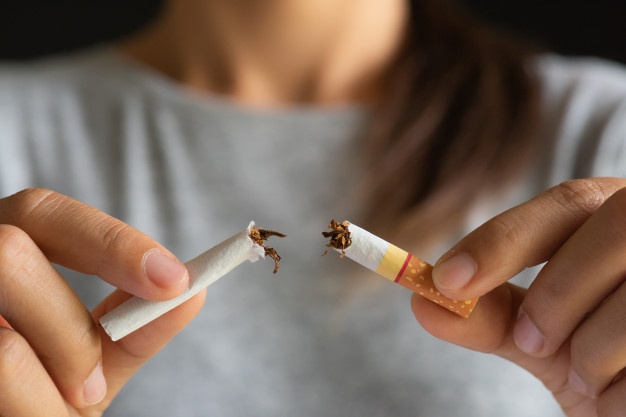Quitting Smoking is Not only Difficult but impossible, thatÔÇÖs if you donÔÇÖt take on it heads- on. Yes, science can help.
If you have reached here and are still reading, it is good news that you are at least considering options to quit (hopefully) and you always wish you werenÔÇÖt one among them. Deciding to quit smoking is only half the battle. Quitting smoking is a journey. You can improve your life, health, and lives of those around you by quitting.
Smoking is the leading preventable cause of death in the world, it brings many health risks. But quitting smoking means fighting with Nicotine craving which is as addictive as heroin and cocaine. Let us guide you through a step by step process that may help you be a better version of yourself, meaning; NO SMOKING!

Step 1: Have a plan
Over the times, scientists have found many techniques that are linked with better success in the journey to quit smoking. You now need to know which scientific method can help you to achieve your goal.
Below are Four Scientific ways to tackle smoking cessation:
1. Cold Turkey / Willpower
The aim of the Cold Turkey technique is quitting smoking all at once without any nicotine replacement products, outside help, medication and therapy. Scientists say chances of success with Cold turkey depend on many factors such as your daily habits, the period of addiction, support from your family.
Remember every smoker is different, as some prefer this technique a more black and white approach. So if you’re Macho with willpower, then you can give it a try.
ÔÇ£Dear Cigarettes, You’ve always been there for me. But, you’re just not right for me anymore. I can’t keep going back and forth with you anymore. I’ve decided it’s time for me to move on & be smoke-free again. Good ByeÔÇØ.
A Word: Like other techniques, you will experience some side effects like aggression, depression, anxiety and weight gain as your body will be working hard to rid toxins, chemicals and overcome the smoking addiction. But with time all these symptoms will subside and better days will follow you
2. Nicotine Replacement Therapy
NRT can help the smoker to reduce nicotine cravings that hinder their journey to quit smoking. NRT is specially designed to give your body a controlled dose of nicotine, toxins and other chemicals. Total five types of NRT’s are approved by the Food and Drug Administration (FDA):
- Inhalers
- Nasal Sprays
- Chewing Gum
- Skin Patches
- Lozenges

A Word: In NRT, nicotine is not replaced, its dosage is only maintained and the success is very short-term with NRT. Before you start NRT, Make up your mind for quitting smoking effectively.
3. Try Alternative Therapies
Cognitive Behavioral Therapy (CBT) is the most successful quit smoking technique, which lets every smoker to understand what is the real cause behind their smoking. CBT helps to deal with other behavioural and emotional issues like Phobia, Anxiety, disorder and Depression. With no effect, a therapist gets rid of all the reasons and dismantles for Smoking so that every smoker is genuinely free.
A Word: If smoking is your only stress reliever, it will be really hard to quit it. But with CBT sessions you can focus on your goal and learn other ways to handle your stress.
4. Hypnosis
The aim of hypnosis is to put smokers into altered and relaxed states that downside the smoking habit with an increase in willpower and encouragement to set yourself free from smoking.
A Word: Hypnosis can be a relaxing and enjoyable experience unless your hypnosis sessions are useful. With this technique, you can respect your body and treat smoking as poison
Keep in Mind:
Quitting smoking has low success rates. But that doesn’t mean quit smoking techniques should be discouraged or arenÔÇÖt worthwhile. Quitting smoking can lower your chances of getting different types of cancers, heart diseases, strokes and lung problems significantly. Good luck and have a smoke-free life!
Let us know your thoughts in the comment section below
Disclaimer:
The content contained herein in this blog is NOT intended to be used as a substitute for the advice of an appropriately qualified doctor and licensed health care physician. The reader should always consult with doctors for medical advice and treatment.

